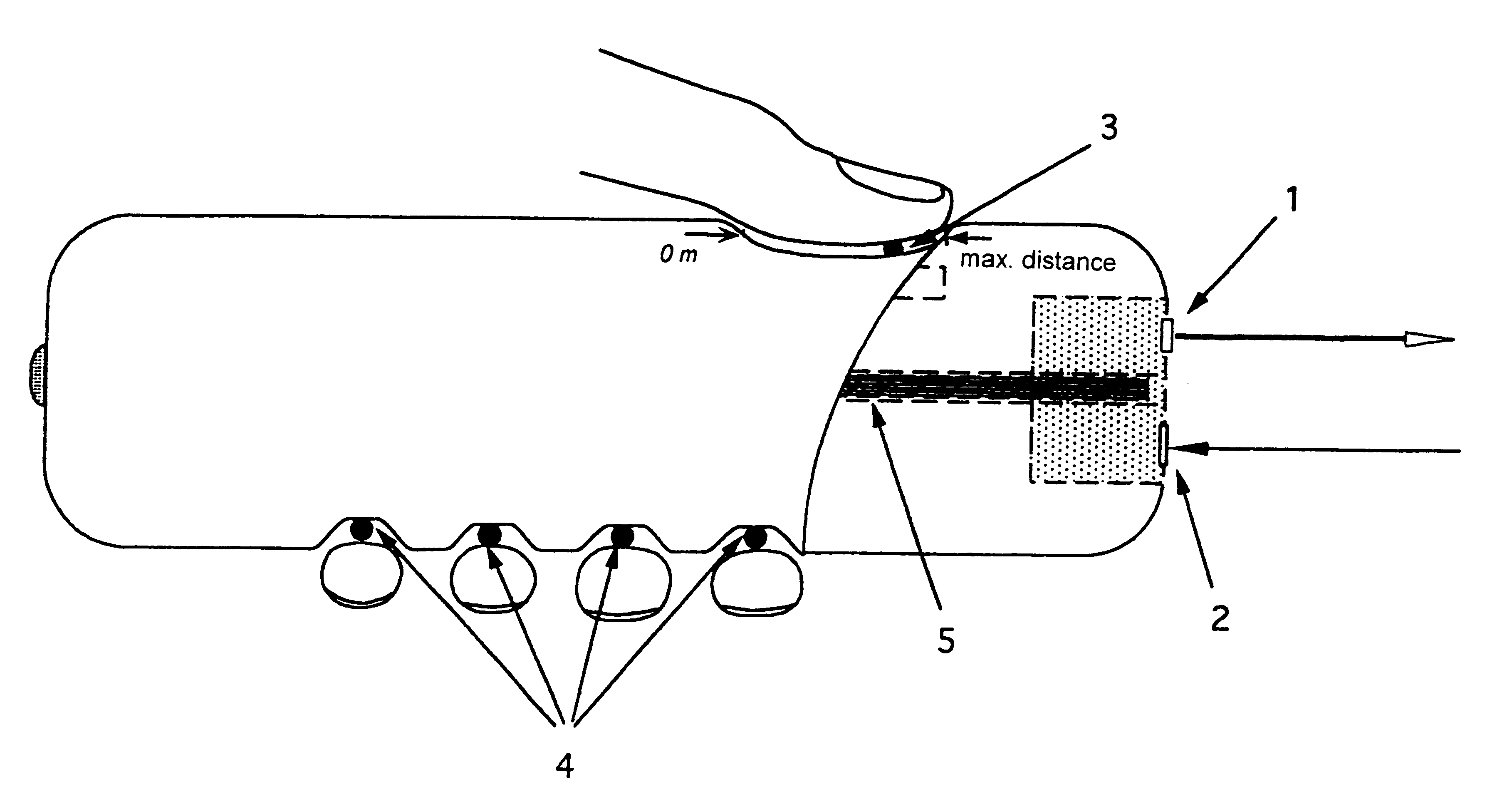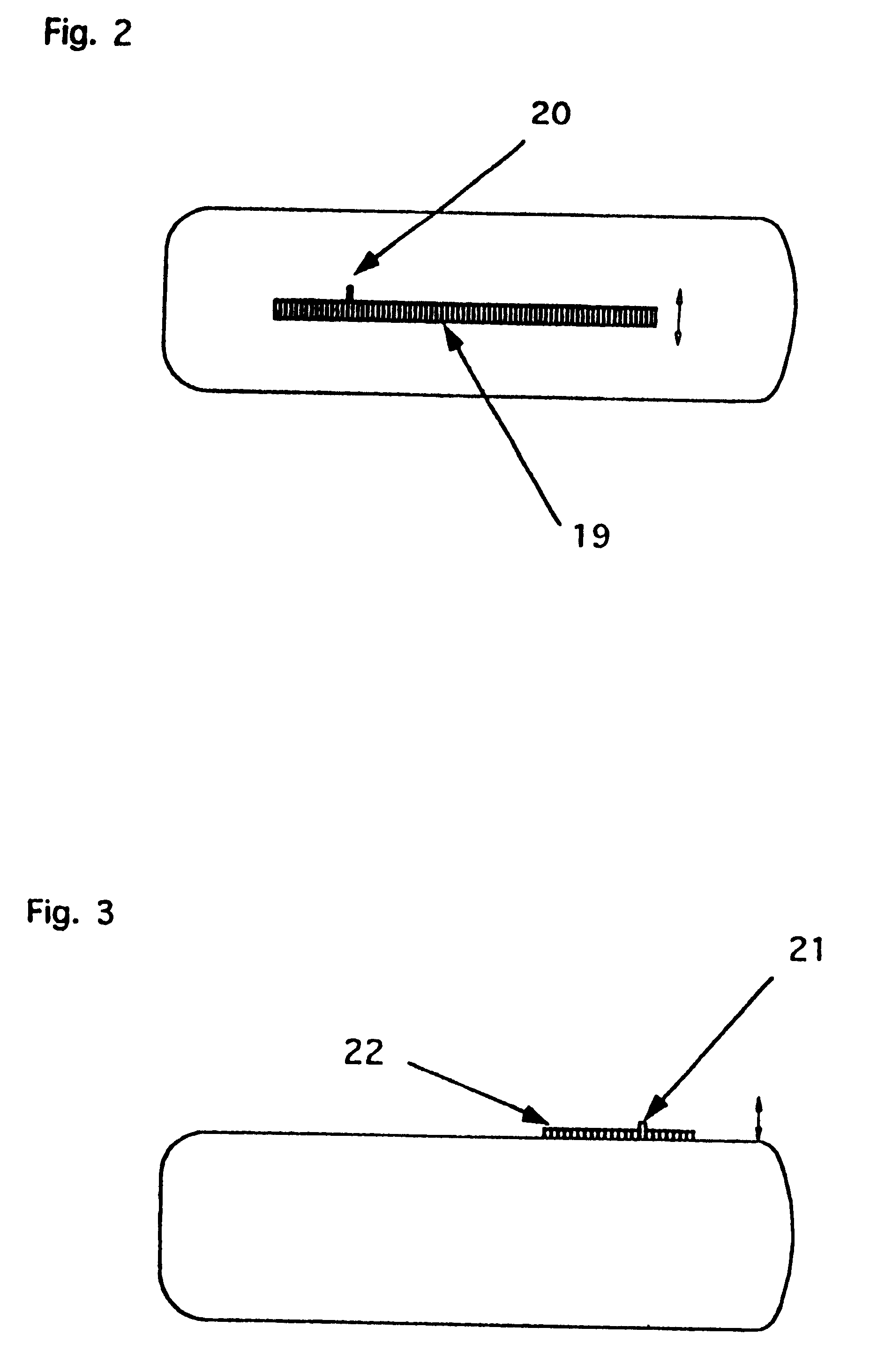Orientation aid for the blind and the visually disabled
a technology for blind people and visual aids, applied in the field of orientation visually disabled, can solve the problems of difficulty in interpretation of acoustic or vibronic signals, short distance to detectable objects, and inconvenient use of indication devices of known mobility aids for blind people working with contactless distance measurements. achieve the effect of easy and clear noticeabl
- Summary
- Abstract
- Description
- Claims
- Application Information
AI Technical Summary
Benefits of technology
Problems solved by technology
Method used
Image
Examples
Embodiment Construction
The embodiment shown in FIG. 1 is a hand held device which is equipped with one single contactless distance measurement system. In this case the distance measurement system is a laser system which measures the distance by means of flight measurement. The transmitter and the receiver unit of the laser distance measurement system are located in the front part of the device. Preferably a diode laser 1 is used which transmits low power (to guarantee safety for other persons) in the IR range and a suitable photo diode 2 which receives the reflected beam. The time of flight of the laser beam is evaluated in a known manner and via the electronic circuit an electrical correcting variable according to the determined distance is generated. In this embodiment the voltage supply is effected by a battery integrated in the device. Such laser distance measurement systems are known and therefore not described in detail here.
The generated correcting variable is supplied to an indicating device. The ...
PUM
 Login to View More
Login to View More Abstract
Description
Claims
Application Information
 Login to View More
Login to View More - R&D
- Intellectual Property
- Life Sciences
- Materials
- Tech Scout
- Unparalleled Data Quality
- Higher Quality Content
- 60% Fewer Hallucinations
Browse by: Latest US Patents, China's latest patents, Technical Efficacy Thesaurus, Application Domain, Technology Topic, Popular Technical Reports.
© 2025 PatSnap. All rights reserved.Legal|Privacy policy|Modern Slavery Act Transparency Statement|Sitemap|About US| Contact US: help@patsnap.com



